Gymnadenia borealis
was first described as a variety of G. conopsea
in 1918 by Druce from Cumbria, England but subsequently reclassified
as a full species in 1997 by Bateman, Pridgeon and Chase, an opinion that was not at the time widely accepted. Its
name refers to the boreal zones of northern Europe and is
commonly known as the Heath Fragrant Orchid.
The range of borealis is not known with certainty but it's thought likely that it is a British endemic and to date has only been formally recorded from the United Kingdom. Its preferred haunts are damp meadows and fens on acidic to neutral substrates, a choice of growing conditions that is regarded as one of the key differentiators between it and the other two UK representatives of the G. conopsea group, G. conopsea and G. densiflora, which are primarily orchids of alkaline soils. Distinguishing the three varieties visually would be difficult but for the differences in habitat. A study of UK Gymnadenia populations in 2007 found that even where soil conditions allowed an overlap of range, gene sharing was uncommon and hybridization nowhere near as frequent as was originally believed.
G. borealis is a decidedly spindly plant with upward arching, narrow, lanceolate leaves that clasp the stem. The flower spike is small, atop a narrow, often kinked stem and containing fewer individual flowers than either of the other two species.
In Britain it is mainly found in the north of England and Scotland, though small populations may also be found further south, notably in the New Forest and Ashdown Forest. The pictures are from the UK counties of Cumberland and Hampshire, dating from the beginning of July.
The range of borealis is not known with certainty but it's thought likely that it is a British endemic and to date has only been formally recorded from the United Kingdom. Its preferred haunts are damp meadows and fens on acidic to neutral substrates, a choice of growing conditions that is regarded as one of the key differentiators between it and the other two UK representatives of the G. conopsea group, G. conopsea and G. densiflora, which are primarily orchids of alkaline soils. Distinguishing the three varieties visually would be difficult but for the differences in habitat. A study of UK Gymnadenia populations in 2007 found that even where soil conditions allowed an overlap of range, gene sharing was uncommon and hybridization nowhere near as frequent as was originally believed.
G. borealis is a decidedly spindly plant with upward arching, narrow, lanceolate leaves that clasp the stem. The flower spike is small, atop a narrow, often kinked stem and containing fewer individual flowers than either of the other two species.
In Britain it is mainly found in the north of England and Scotland, though small populations may also be found further south, notably in the New Forest and Ashdown Forest. The pictures are from the UK counties of Cumberland and Hampshire, dating from the beginning of July.
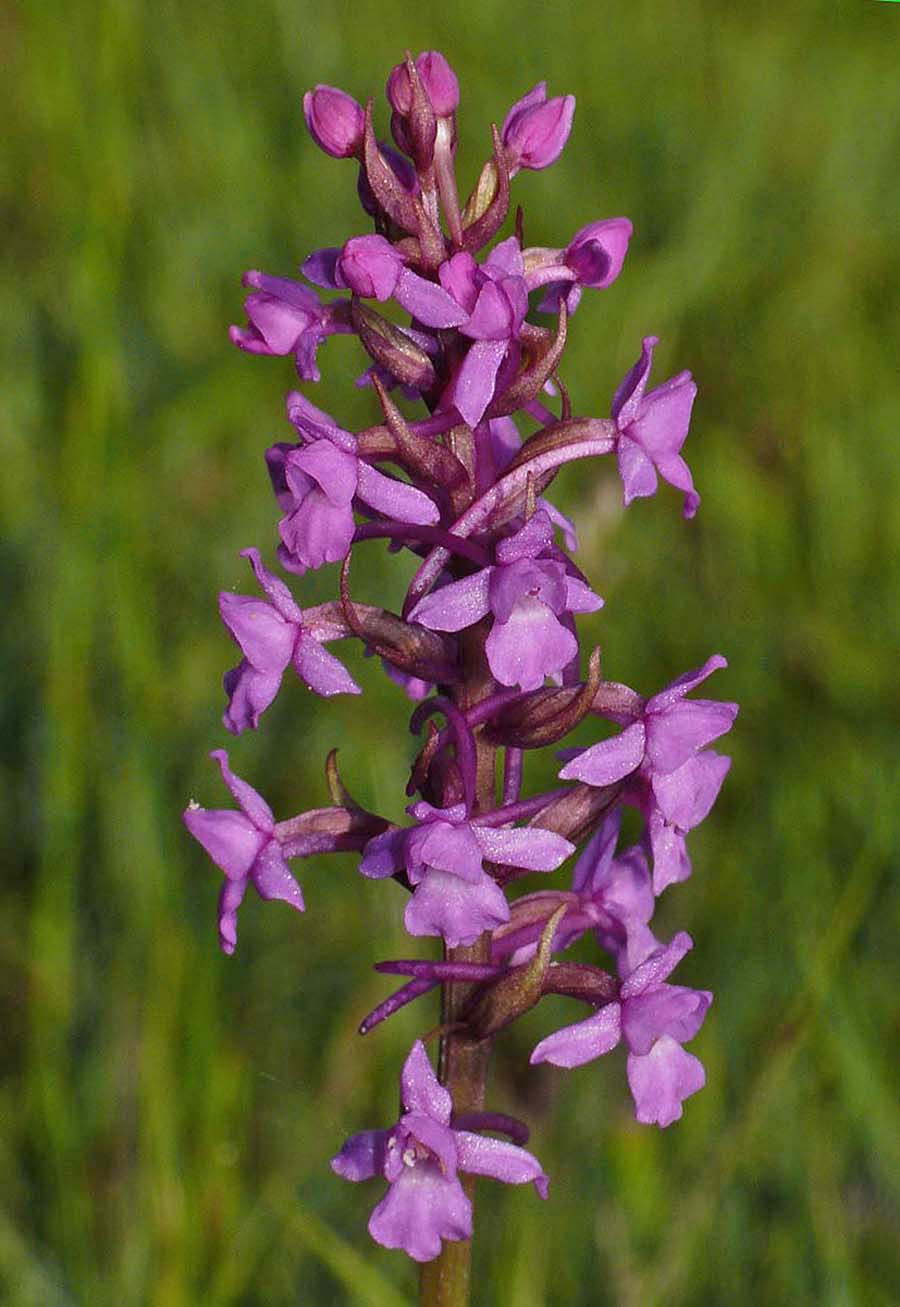
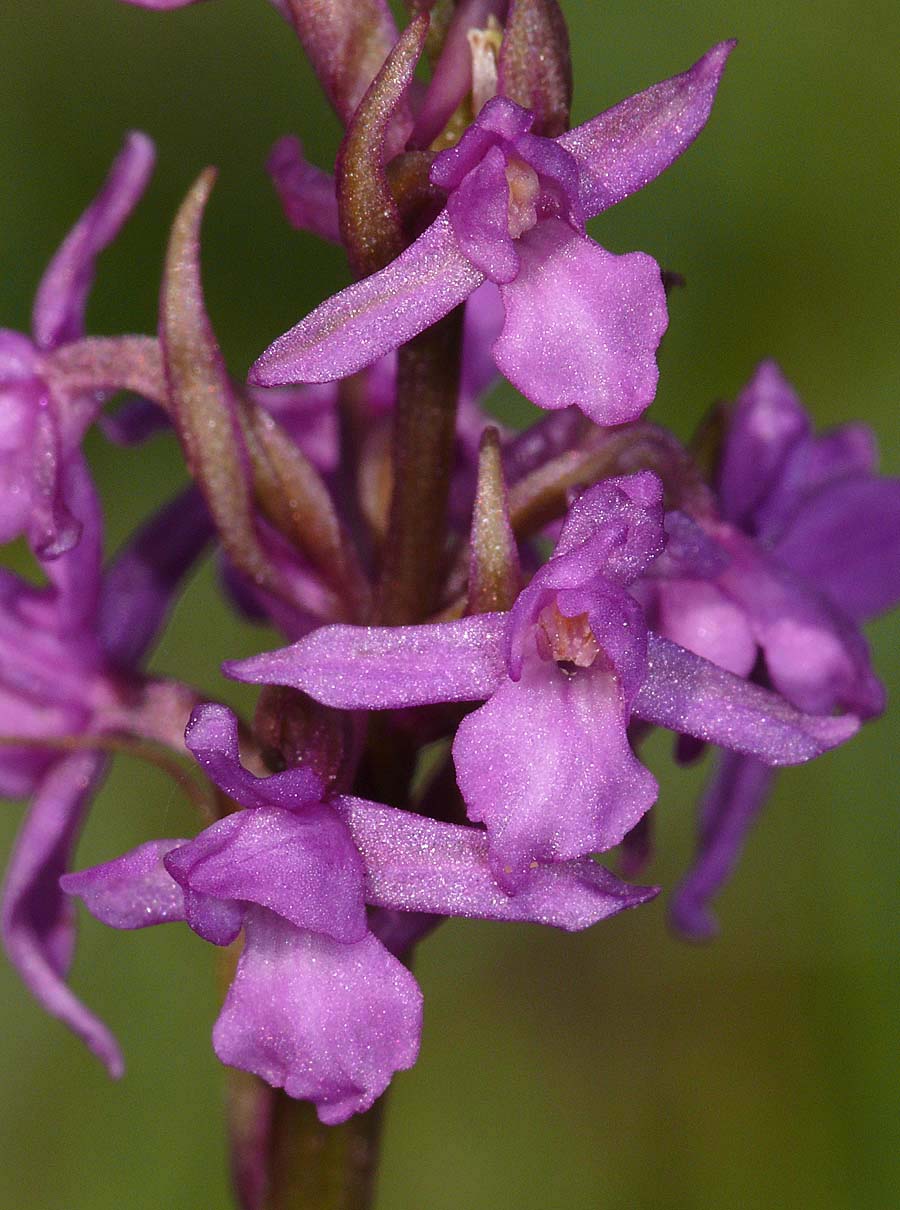
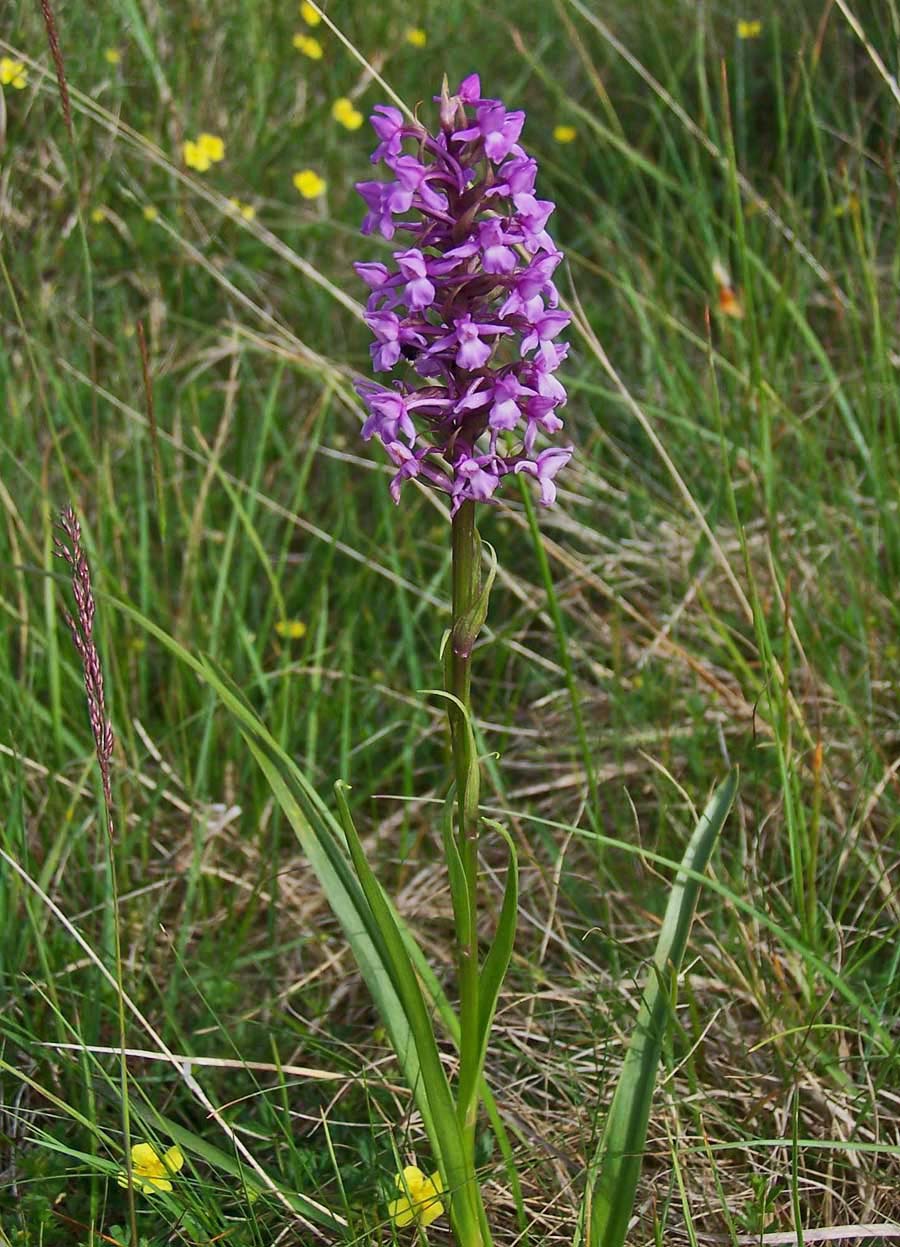
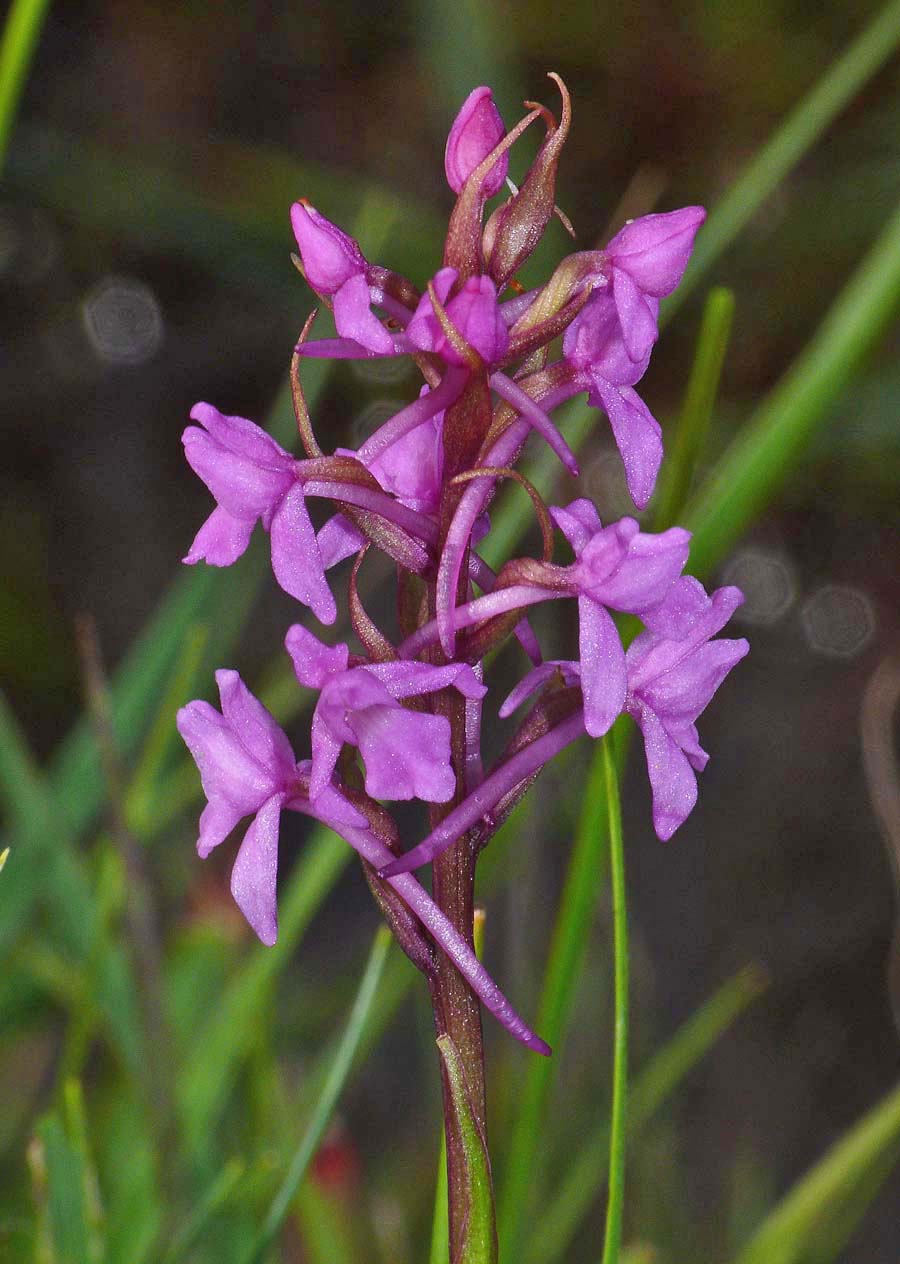
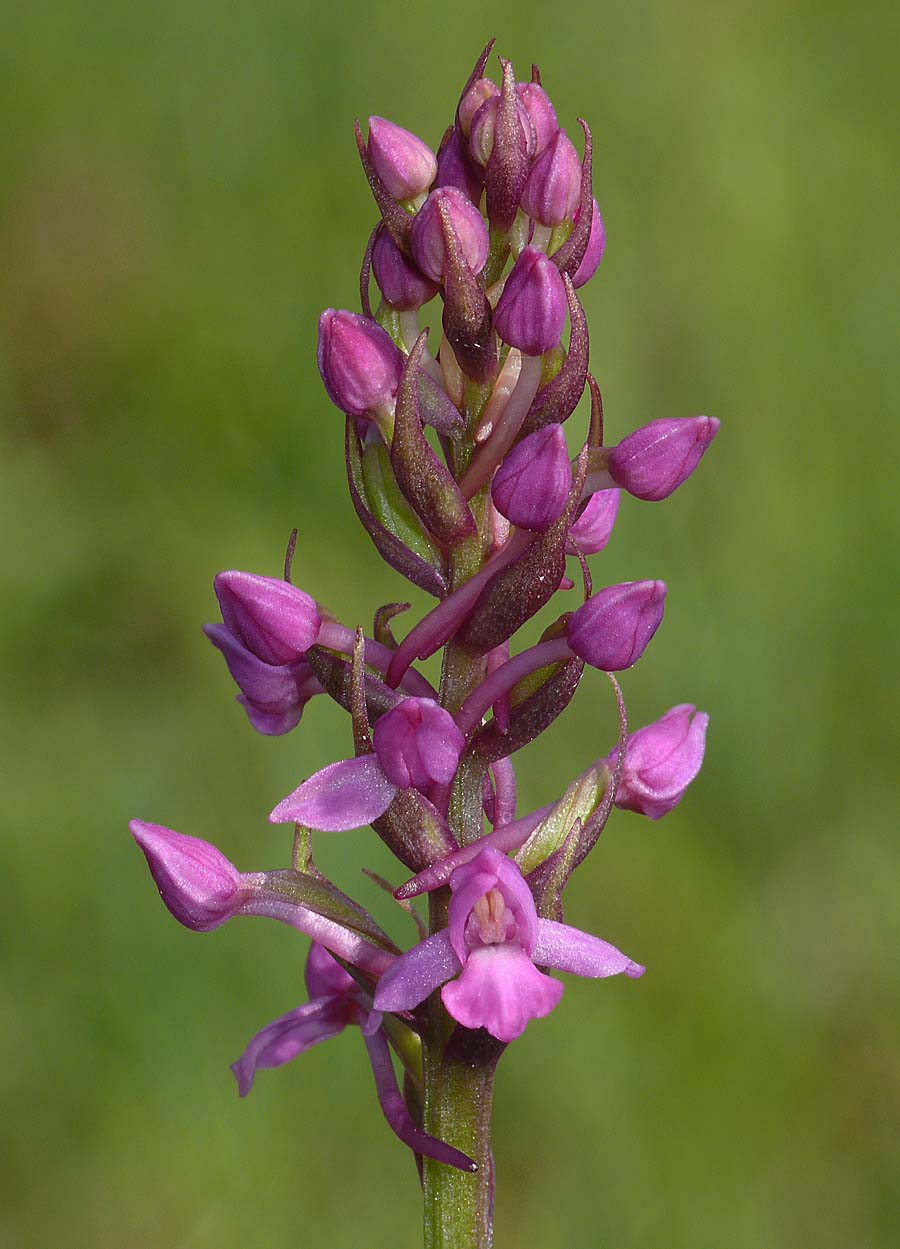
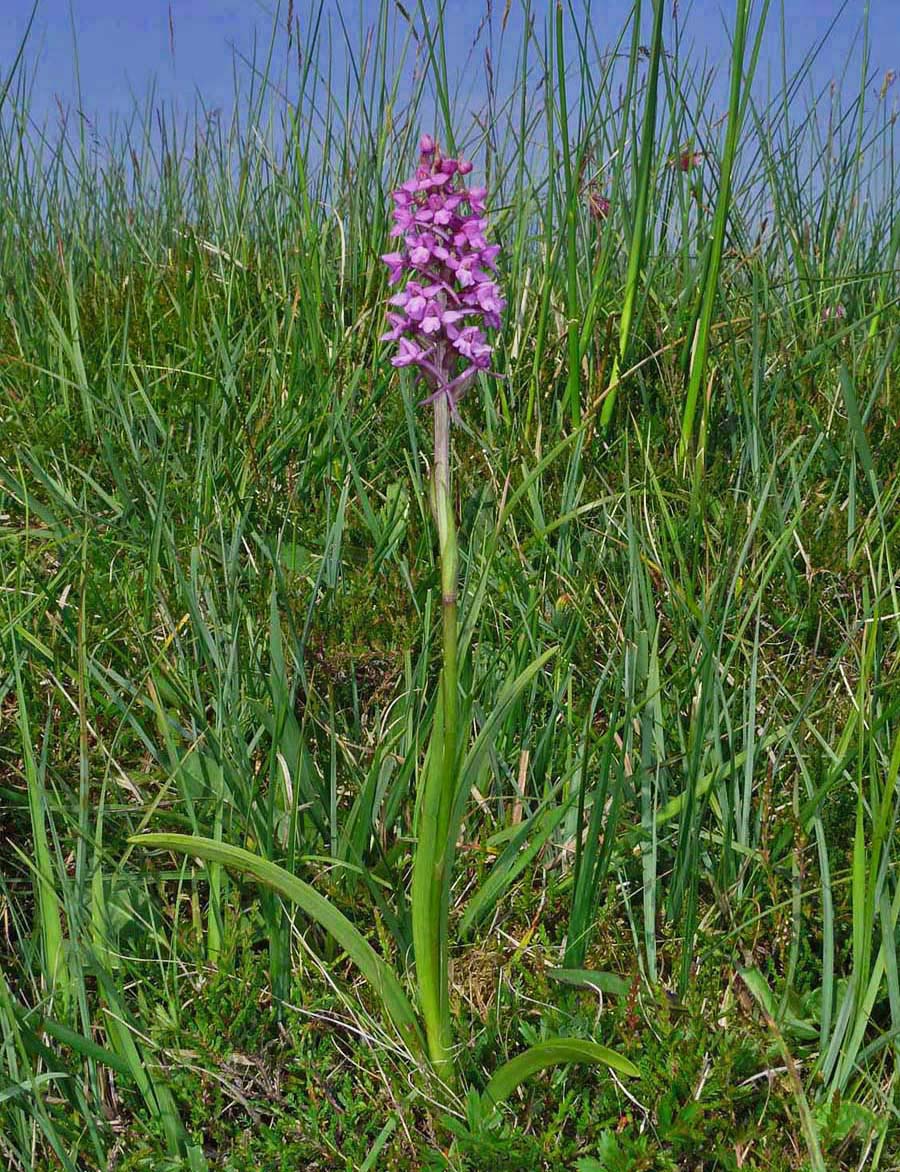
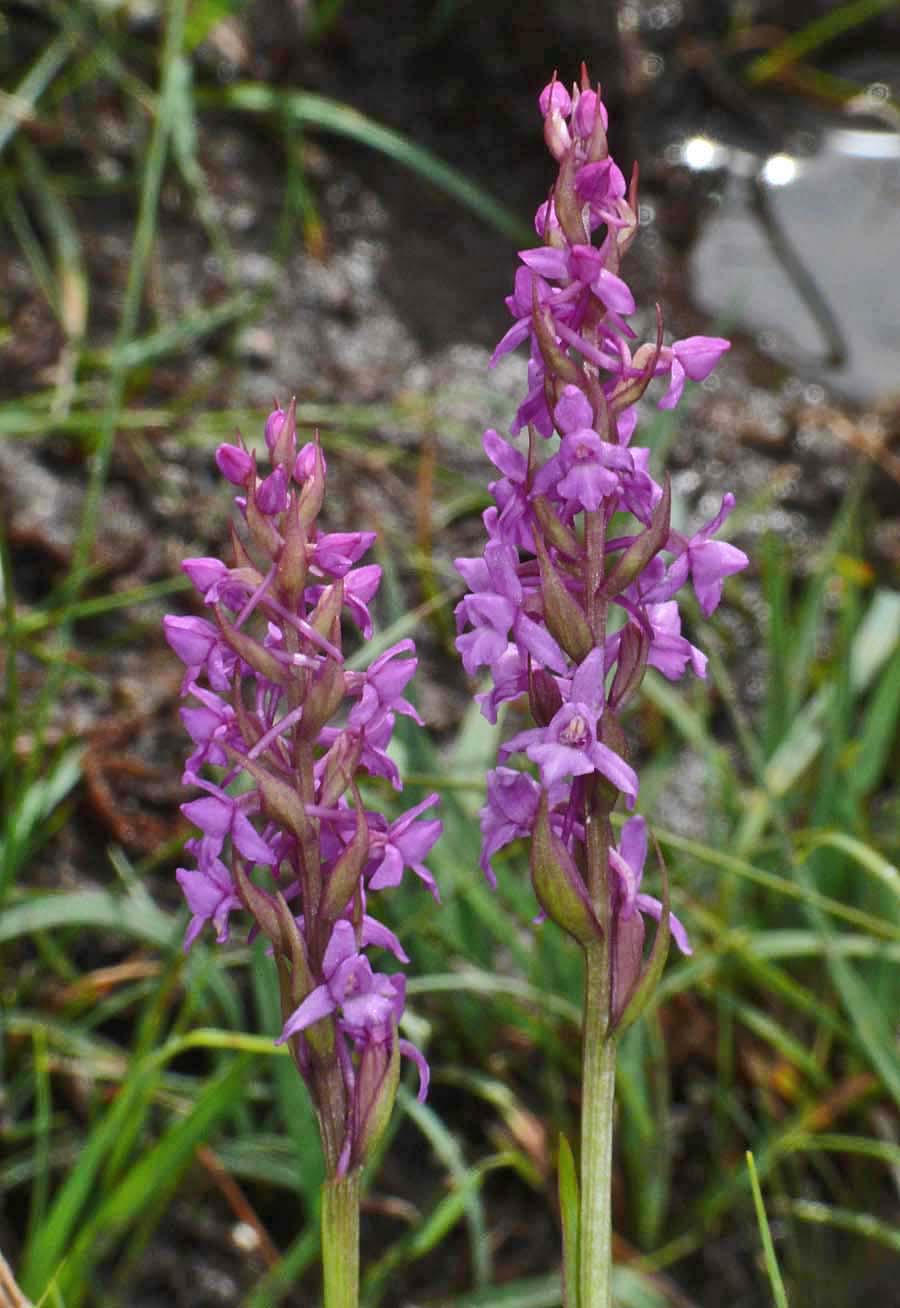
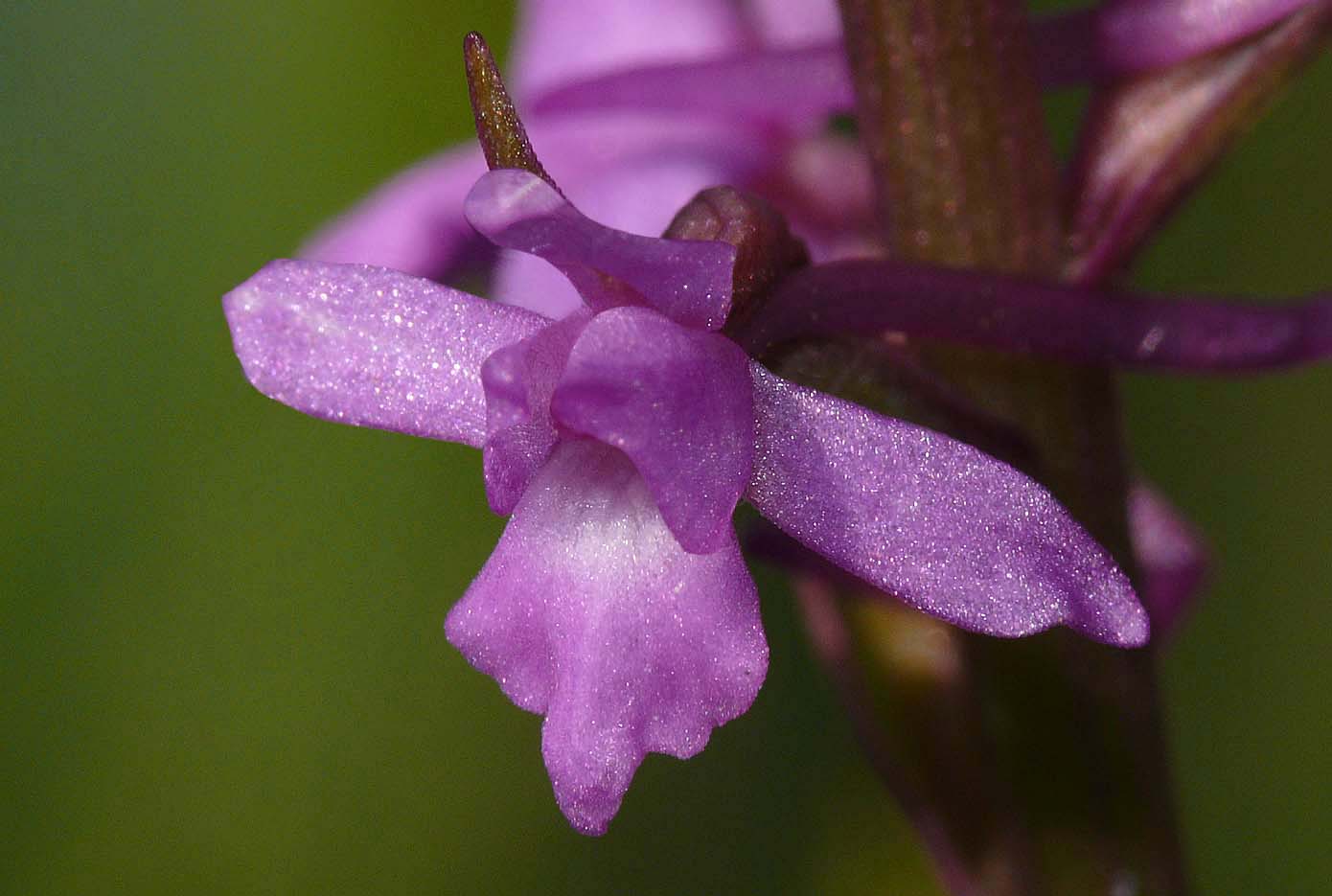
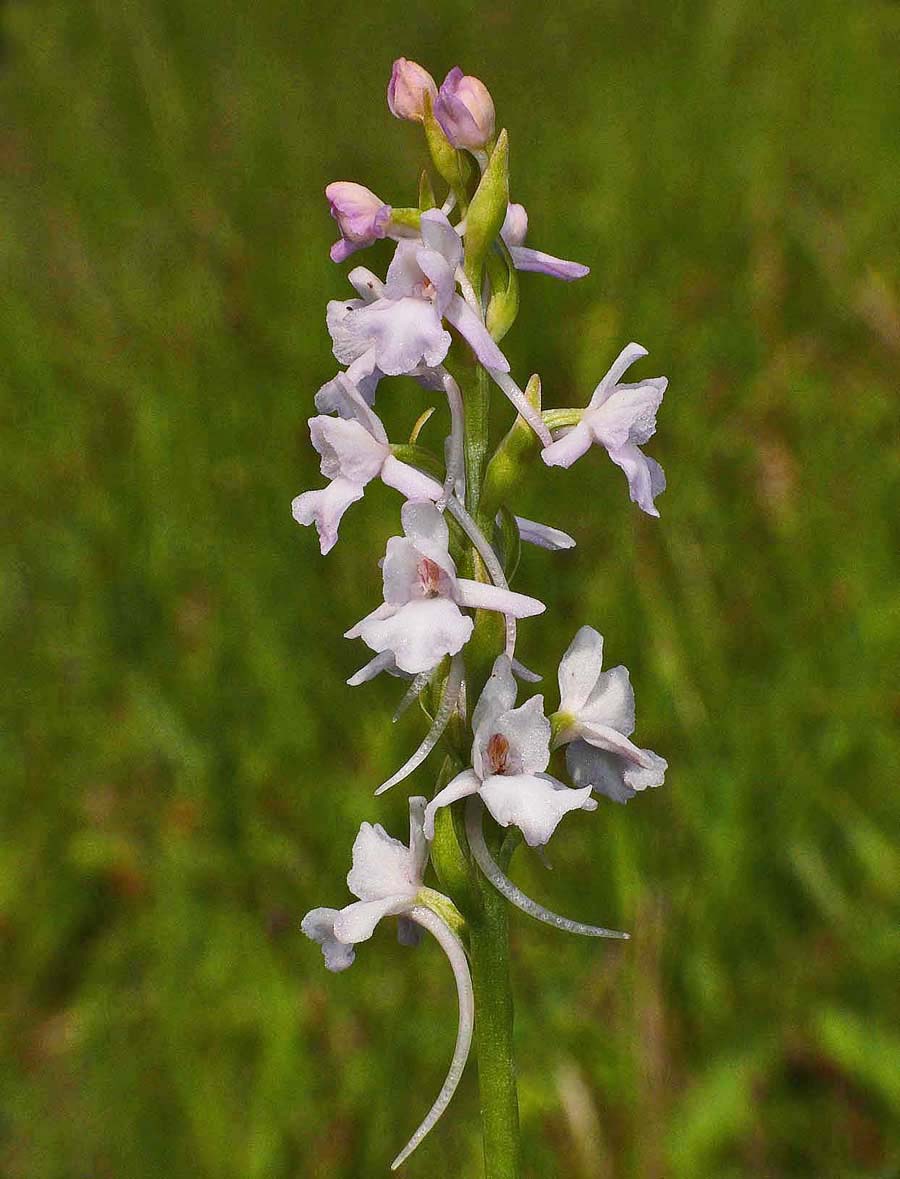
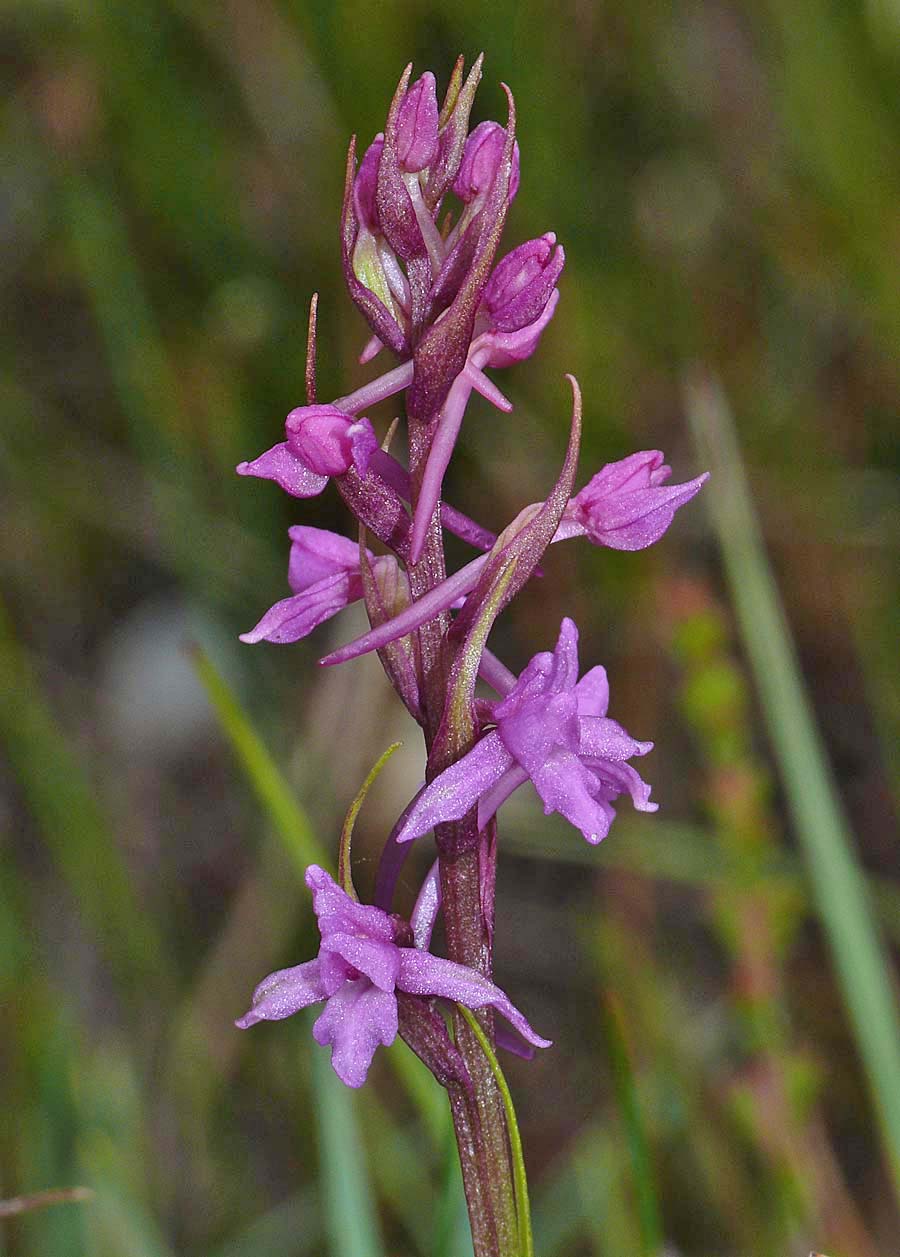
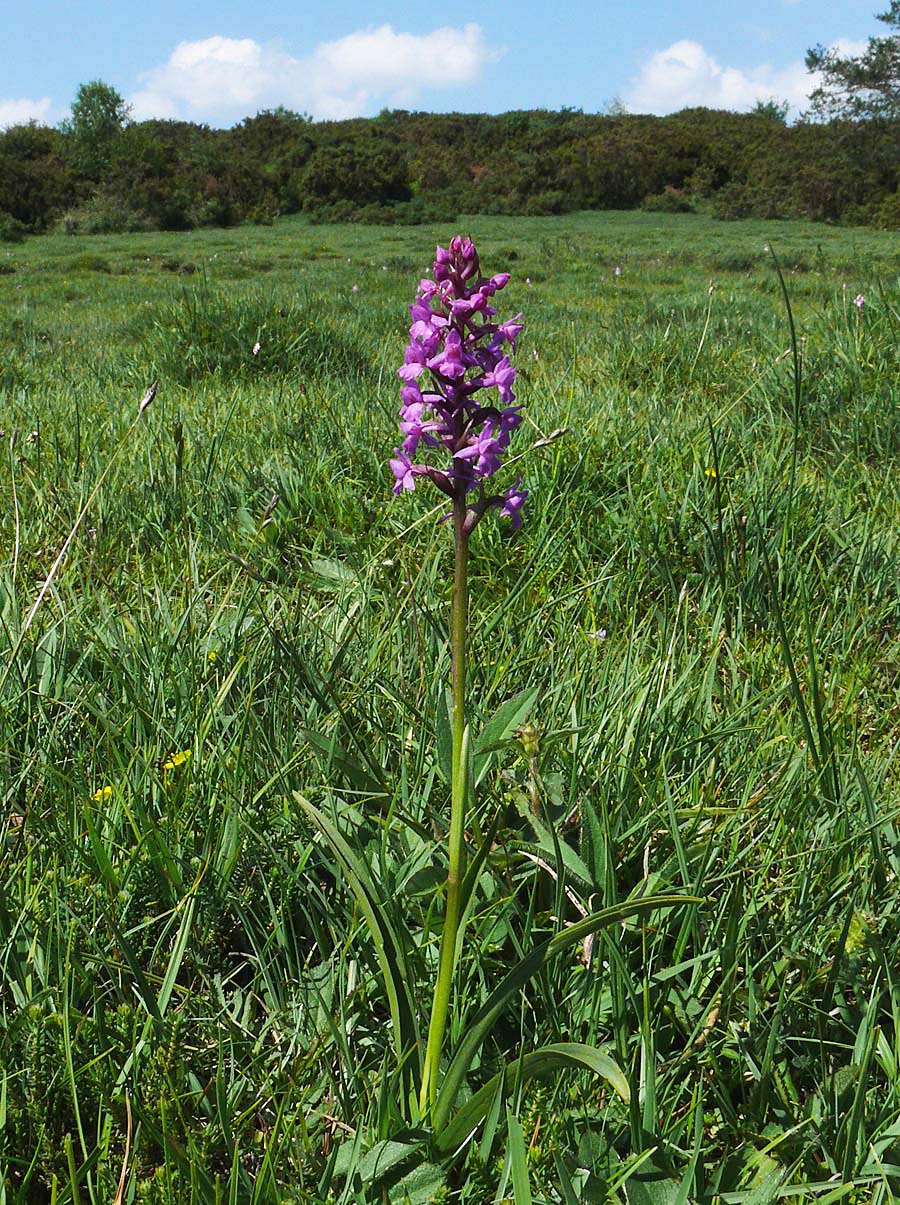
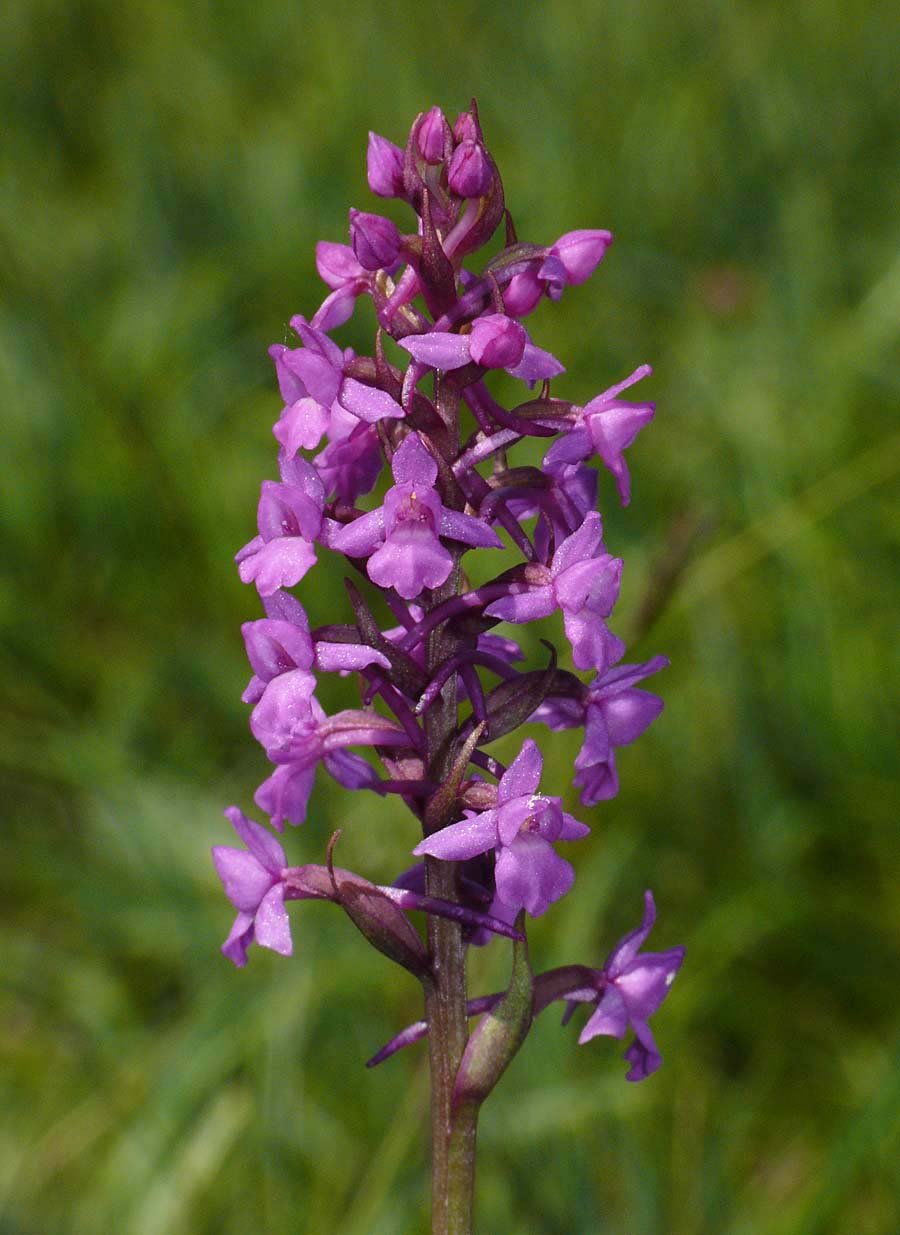
.